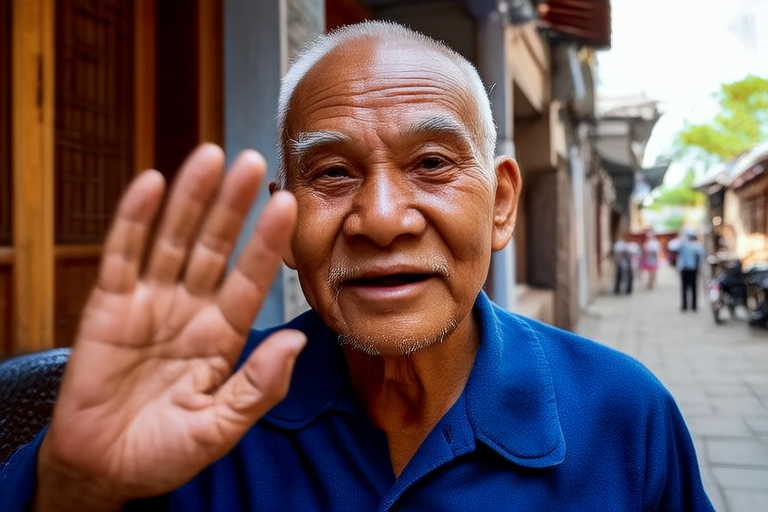The Silent Language: Decoding Gestures and Customs Across Cultures

“`html
The Silent Language: Decoding Gestures and Customs Across Cultures
Introduction
Non-verbal communication is often referred to as the silent language of the world. It transcends spoken languages and serves as a universal means of expression. From a simple nod to a complex hand gesture, these non-verbal cues convey emotions, intentions, and attitudes without the need for words. For travelers and global citizens, understanding these gestures and customs is crucial. Misinterpretations can lead to misunderstandings, embarrassment, or even offense.
This article delves into the nuances of non-verbal communication across cultures, exploring how gestures and customs vary and what they mean in different contexts. By decoding these silent languages, we can foster better cross-cultural communication and build stronger connections with people from all over the world.
Understanding Non-Verbal Communication
Non-verbal communication encompasses a wide range of behaviors, including body language, facial expressions, and gestures. These elements work together to convey meaning beyond mere words. For instance, a smile might express happiness in one context but could be used sarcastically in another. Similarly, a raised eyebrow can indicate surprise or skepticism.
Globally, certain gestures are widely recognized. Nodding the head signifies agreement, while shaking hands is a common greeting in many cultures. However, the interpretation and usage of these gestures can vary significantly across different societies. In some cultures, a single nod may suffice, whereas in others, a more elaborate nod or bow is expected. Understanding these variations is essential for effective communication.
Cultural Differences in Gestures
Middle Eastern Culture
In many Middle Eastern countries, the right hand is considered clean and pure, while the left hand is associated with impurity. Therefore, it’s customary to use the right hand for eating, shaking hands, and giving gifts. Conversely, the left hand is reserved for personal hygiene. This distinction underscores the importance of being mindful of hand usage in such contexts.
Asian Culture
In Japan, bowing is a common form of greeting and apology. The depth of the bow varies depending on the level of respect being shown. A slight bow might be used among equals, while a deeper bow is reserved for showing profound respect. In contrast, in China, a handshake is more prevalent, though it is often accompanied by a slight bow.
European Culture
Eye contact is highly valued in many European countries as a sign of honesty and confidence. However, prolonged eye contact might be perceived as aggressive or disrespectful in other parts of the world. In France, for example, kissing on both cheeks is a common greeting between friends and acquaintances.
African Culture
In many African cultures, physical proximity plays a significant role in communication. Standing close to someone during conversation is often seen as a sign of intimacy and trust. In contrast, maintaining a certain distance is preferred in Western cultures.
Latin American Culture
The “thumbs up” gesture is generally understood as a positive signal in most Western countries. However, in some Latin American countries, it can be interpreted as an insult. Similarly, the “OK” sign made with the thumb and index finger can be offensive in certain regions.
Customs and Etiquette
Etiquette and customs shape interactions in profound ways. Dining customs, for instance, vary greatly across cultures. In Japan, it’s customary to slurp noodles as a sign of appreciation for the meal. In contrast, making noise while eating is generally discouraged in many Western countries. Gift-giving also holds significant cultural weight. In some cultures, wrapping presents in white paper is considered respectful, while in others, it may be inappropriate.
Social protocols are equally important. In many Middle Eastern countries, removing your shoes before entering someone’s home is a sign of respect. In India, it’s customary to greet elders with a namaste, placing your palms together and bowing slightly. Travelers must be aware of these customs to navigate interactions respectfully.
The Impact of Technology and Globalization
The advent of technology and globalization has profoundly influenced non-verbal communication. Social media platforms and global media have introduced new gestures and customs to a wider audience. For example, the “like” button on social media has become a universal symbol of approval. Similarly, emojis have transcended language barriers, allowing users to express emotions succinctly.
While these changes have facilitated greater understanding and connection, they have also led to both uniformity and diversity in non-verbal communication. On one hand, certain gestures and customs are becoming more universally recognized. On the other hand, local practices continue to thrive, ensuring cultural diversity remains intact.
Conclusion
Understanding the silent language of gestures and customs across cultures is essential for effective cross-cultural communication. By recognizing the nuances and variations in non-verbal cues, we can avoid misunderstandings and foster meaningful interactions. Whether you’re traveling abroad or interacting with people from different backgrounds, approaching each culture with an open mind and a willingness to learn is key.
Embrace the diversity of non-verbal communication and respect the unique customs and gestures of each culture. By doing so, we can build bridges and strengthen our global community.
“`